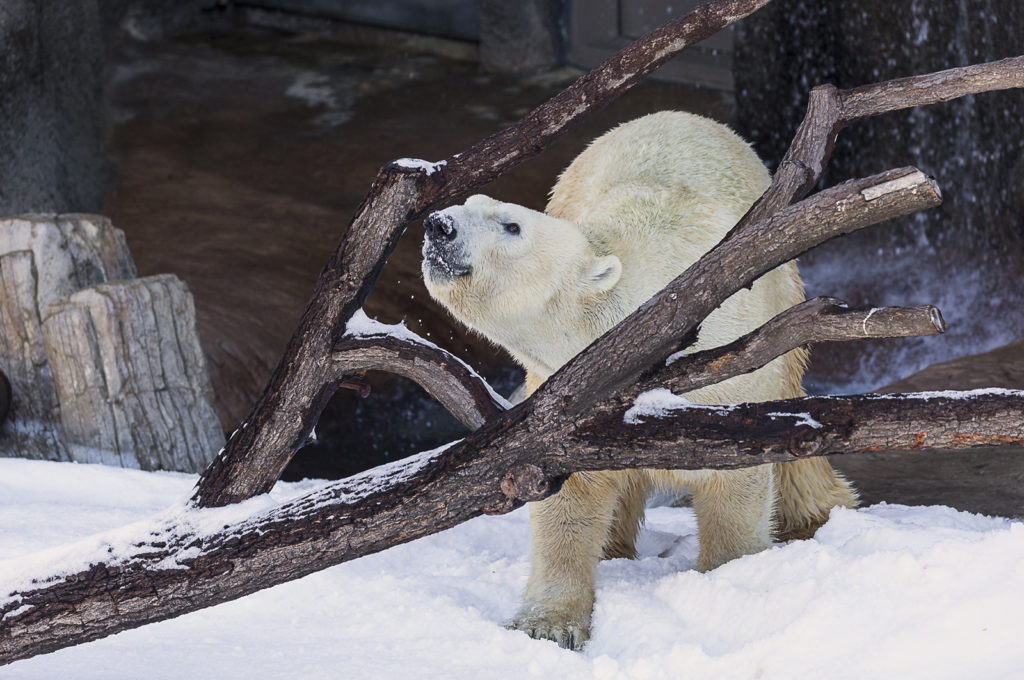
Polar bears are an incredibly intelligent and inquisitive species. This can present challenges when managing them in a zoological setting. Without creative and novel experiences every day, all zoo habitats remain static for their animal inhabitants. Historically, zookeepers have provided enrichment for the animals in their care. This can consist of toys, scents, novel objects, and ways of dispensing resources—such as food—in challenging ways. When you consider the dynamic and layered lives animals lead in the wild, zoo enrichment represents the challenges that they would encounter daily.
Polar bears are specifically adapted for life above the Arctic Circle, one of the most inhospitable environments on our planet. They must overcome incredible obstacles to be successful in finding food and mates. While we cannot recreate arctic conditions in a zoo, we can elicit the same types of behaviors that they would have to utilize to be successful in those endeavors in the wild. Encouraging the expression of these behaviors gives the bears an opportunity to thrive.

At Polar Bear Plunge, we use enrichment to create experiences that tell a story. In the wild, there are reliable sensory indicators that allude to a resource becoming available. For instance, we can speculate that if a bear smells wolves, those predators might make a kill that could become a meal for the polar bear. On the day before we provide the bears with on-exhibit carcass or beef shanks, we provide the smell of rotating large carnivores as an indicator that this high-value meal will be coming. Not only does this tell the bears that this is something to look forward to, it allows the zookeepers to prep such meals without the bears being in the building due to the smell of meat.
If a bear in the wild has been processing a carcass for hours or days, an indicator that the resource is depleted is the increased presence of scavengers. Once the polar bears have finished these meals, we provide them with the scent of arctic foxes or coyotes.
We use different scents for specific food items. Inside the polar bear building we have programmable scent dispensers. On Mondays at 5 a.m., the smell of almond is released. This tells the bears that they will have whole rabbits as food that day. On Wednesdays, the scent of lemon is dispensed. This means that boiled eggs will be provided in the artificial eagle nest in their habitat, which they will have to stand up and rock to get the eggs to fall to them.
These are just a few examples of ways that we plan out and combine enrichment to keep the polar bears engaged with their environment and to disassociate the zookeepers as their source of food and resources.
As you visit Polar Bear Plunge or view the Polar Cam, watch for the different opportunities for enrichment offered throughout the exhibit—and remember that there is always more than meets the eye!
Nate Wagner is a senior keeper at the San Diego Zoo.




